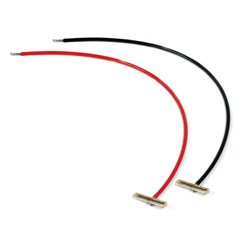Wagon turntables were similar in principle to full-size ones used to turn locomotives, they were however smaller and...
No products
Product successfully added to your shopping cart
There are 0 items in your cart. There is 1 item in your cart.
Search Tips
End of year opening times
If you select next day delivery, please note deliveries are not made on New Year's Day.
The shop in Sandown is closed on New Years's Day and closing at 2.30pm on New Year's Eve.
Tuesday 30th: 10am to 4.30pm - Wednesday 31st: 10am to 2.30pm - Thursday 1st: closed - Friday onwards: 10am to 4.30pm.
What is a Wickham Trolley?
A Wickham Trolley is a small railway maintenance vehicle once widely used across Britain's railways. Built by D Wickham & Co Ltd, based in Ware, Hertfordshire, these trolleys were essential for railway engineers and track workers. They provided a quick and efficient means of travelling along the tracks for inspection, maintenance and transporting tools or equipment. Unlike large locomotives, they were lightweight and easy to manoeuvre, making them ideal for short journeys and trackside work.
Most Wickham Trolleys were petrol or diesel-powered, though earlier models were hand-propelled. They typically featured a simple metal or wooden frame, seating for the crew, and sometimes a small flatbed or storage space. Designed for practicality rather than comfort, they allowed engineers to reach remote sections of the railway with minimal effort. They were built to run on both standard-gauge and narrow-gauge tracks, making them versatile across different railway networks.
Introduced in the 1920s, Wickham Trolleys became a common sight on British railways, particularly under British Railways. Their reliability and ease of use kept them in service for many decades, but over time, they were replaced by more modern, motorised track maintenance vehicles. Despite this, they remained in use on some branch lines and industrial railways well into the late 20th century.
Today, Wickham Trolleys are a rare but much-loved piece of railway history. Many have been preserved on heritage railways, where they are occasionally demonstrated for visitors. Some railway museums also display them as a reminder of a time when track maintenance relied on these simple yet effective machines. If you visit a heritage railway, you might just see one in action, offering a glimpse into the everyday working life of Britain's railway engineers.
Click here to receive the tips weekly in your mailbox. You can unsubscribe at any time.








